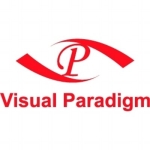What is most valuable?
The solution is easy to set up.
The stability is okay. The performance is pretty good.
It's a very flexible solution.
What needs improvement?
It requires a lot of skill to get into it.
It requires more simplicity. You have two options. Either you go very simple, then it's quite a hurdle to get into it or you go very complex. It's a hurdle too. However, when you decide to go complex, then you know exactly what you're doing. Therefore, the gap between, let's say, a common user and an experienced user is large. For Draw.io, I can point anybody to Draw.io and they can just get in there and do whatever they want to do, and it works for them. Visio requires someone to be more experienced.
There's also a solution called TAG for writing documents, which is awesome. It's mainly used in universities, education areas, and big pharma. It's an awesome tool. It takes a lot of time to get in there, but when you are in there, you can do basically almost every kind of document without any issues. Visio is much more similar to this. There's complexity and yet you can do anything within it.
I'm not used to the new versions of Visio. There is a standard version. Always when I get in there, I get frustrated as I can't do the things that I like. The usability could be improved.
Stencils are always an issue, however, this depends on the vendors.
The stability can get iffy if you are doing very complex things.
For how long have I used the solution?
I've used the solution quite extensively during the last ten years. It's been a long time.
What do I think about the stability of the solution?
The stability really depends on what you're using and what you're doing. When you get complex, you can get some crashes. I have never figured out why that is. It may happen when you have different cards or registers with a lot of things linked together and grouped. For standard usage, it's awesome. When you do more complex things, well, you might have issues.
What do I think about the scalability of the solution?
I can't say a thing about scalability.
How are customer service and support?
I can't speak to technical support as I don't deal with them. We have in-house support and our in-house support is abysmal. What happens after them, I really can't say. If you call them to ask questions, they just say, "We have to look it up." And that's the last thing you hear. That, however, is an internal issue. It's nothing to do with the quality of the support in general.
Which solution did I use previously and why did I switch?
We did not previously use a different solution.
I do now use Draw.io a lot.
How was the initial setup?
The implementation process is quite simple and straightforward.
Deployment times vary. It depends on how you manage it. If you do a good management process, with document templates and everything, it takes a lot longer. We basically just made packages and rolled them there, using the variables. I'm not a package filler, however, for us, it was easy.
I can't speak to how many people now manage the solution as it is completely outsourced. We don't manage it ourselves.
What about the implementation team?
We handled the implementation in-house. We did not need to hire any consultants or integrators.
What's my experience with pricing, setup cost, and licensing?
I can't speak to the cost of the solution. We are using just the standard licensing terms for an enterprise license agreement with Microsoft, where we basically have a lot of things in there. I don't think it's included in any Office Microsoft 365 licenses. We basically just have a subscription for every license we're using, however, I can't speak to pricing or terms.
What other advice do I have?
I have to let Visio go as most often it's too complex and it takes too much time. I'm rather using Draw.io, which is by far enough for almost everything I do expect if I am really drawing up complex cabling things in a building, for example.
I'm just an end-user. The company I work for is a customer. We don't have a special business relationship with Visio.
I'd give new users the same advice I do for every tool. Be really clear on what you want to achieve. Be really clear that when you do it and do it in a strategical and tactical way. Don't do a single deployment and don't just install it and let users do their thing. Agree on templates, stencils, et cetera, that you're using within the company, and keep it simple and crisp, as simple and crisp as possible.
After using the solution for ten years, I would rate it at an eight out of ten.
Which deployment model are you using for this solution?
On-premises
Disclosure: My company does not have a business relationship with this vendor other than being a customer.





















